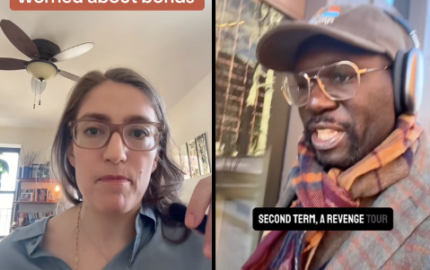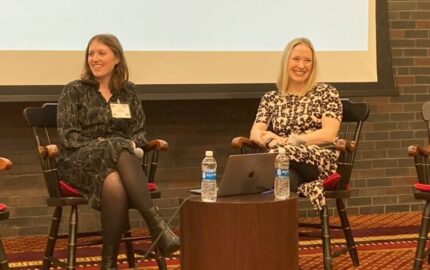
I’m a new media artist who works with experimental storytelling; some of my recent work has included biography, historical walking tours, and memoirs, using materials ranging from cellphones and maps to PowerPoint and Twitter. My work is often based on true stories and nonfiction, and plays with the balance between the subjective and objective aspects of a story.
We generally think of subjectivity in storytelling as the human factor, in the form of opinions, adjectives, or editing with partisan emphasis. But subjectivity also resides in technology, where its dimensions may be less familiar. Everyone using technology to communicate should be at least aware of what it is bringing to the table. And these days, that is everyone.
* * *
We need to slow down a little so we can think straight. Everything is moving too fast, and there’s too much of it. No one has time for anything except the “app”: that little predigested package with soft rounded corners, popping up with a factoid, and then disappearing again with a click. What the app is meant to do or say almost doesn’t matter, as long as it’s fast.
* * *
That's our working assumption; it’s common sense, it’s understood: everything's too much, everything's too trivial, everything's too fast. We're stranded in the shallows and are gasping for depth. Yes, that’s how our world is. Yes, those are our problems.
But what if it isn’t? And what if they aren’t?
To see what I mean, let’s step back in time for a minute.
The social networking technology of the 1970s was, briefly, CB radio. It was mobile, cheap, easy; perfect for Getting Somewhere. The idea that we could assemble in virtual space without mediation by the powers-that-be fit neatly into our paranoid pragmatism: turn on, tune in, connect, all from the comfort of our isolated car or kitchen. But despite a vibrant subculture that went hugely mainstream for a moment, the mainstream did not maintain. Subsiding back into its substrate, CB never obtained the social strength of, say, Twitter or texting.

CB radio relies on speaking rather than writing, and speaking is built for speed, for immediacy. And while this lends connections more reality, it also increases the pressure to perform. What if you don't have the perfect thing to say? Too late, time's up!
With technologies of immediacy, after the first tentative forays, the reaction is to wait. But since topics in social networks are often provoked by participation in the medium, non-participation cuts you off from the flow of the space. And then avoidance becomes default and the wait becomes reality and the radio is parked, unused, on top of the fridge or down in the basement.
Current forms of social networking are asynchronous and written, which means, in a certain sense, the pressure is off. Facebook, Twitter, texting and our other social technologies use typing. You post when you are satisfied with your phrasing, and you read at your leisure, perhaps some time later. Performance anxiety is lessened enough by this so that people find all sorts of things to say, and even clever ways to say them. And the more they participate, the more they have to discuss, and the conversations gain momentum.
We edge right up to immediacy with so-called "real-time" chats and IM. But it is significant that these are still written, and they are still asynchronous, even if very fast; they're not real-time in the sense that speech is. We may have exchanges with others where the responses are separated by only a few seconds. But the promise of the pause, the knowledge that we could take it if we needed to, makes all the difference.
Reporters have to file more copy on more platforms and file it faster, sometimes making it harder to think of their stories as stories. But the pieces accumulate, and there's another story happening in the frantic practice. Could it be that while immersed in our hyperlinked, networked, and accelerated world, we’re actually practicing the art of the pause?
[This post is an expanded version of a piece Nelson originally wrote for HiLobrow.com. For more, check out our February interview with Nelson on traditional and new media storytelling.]


